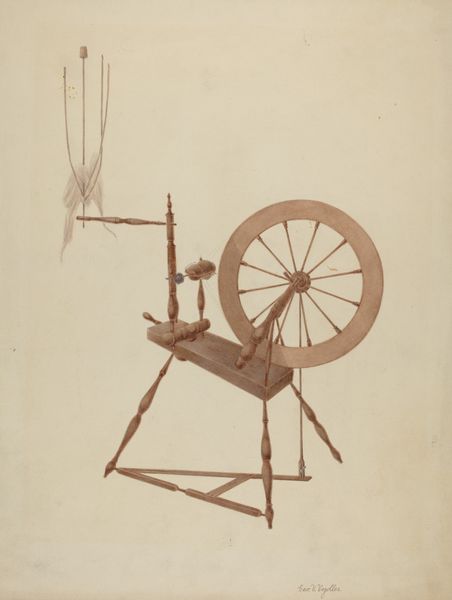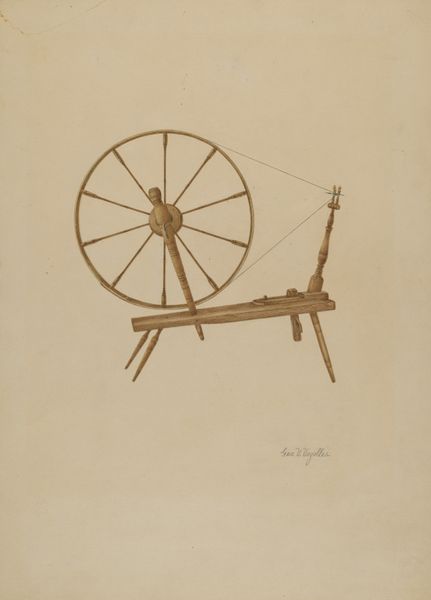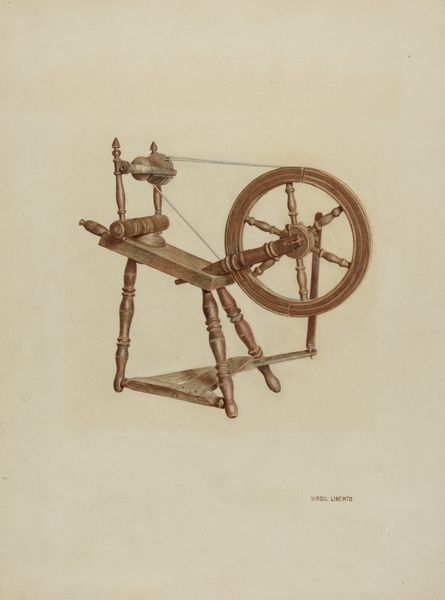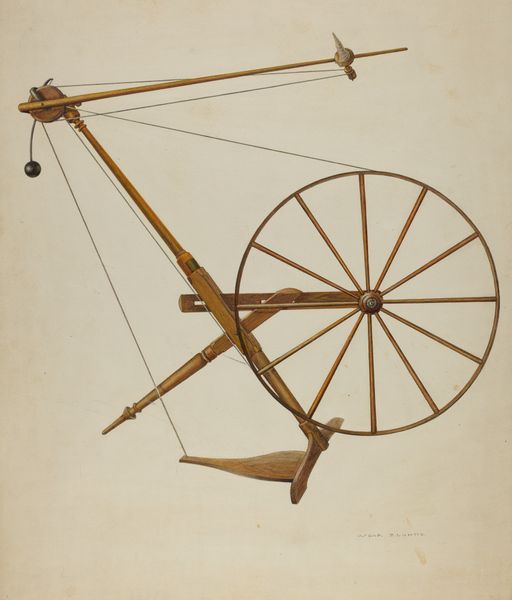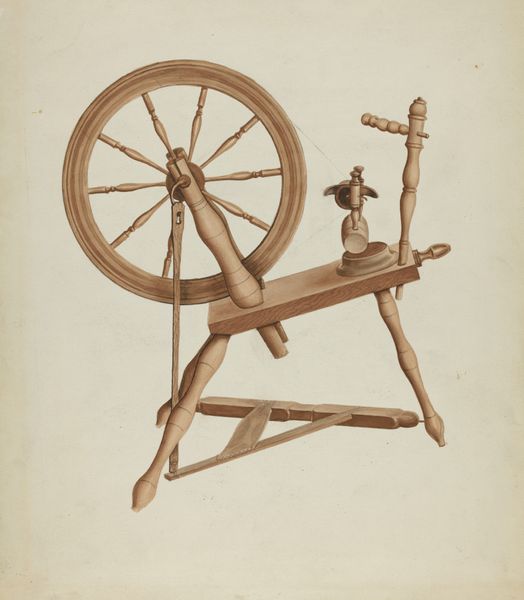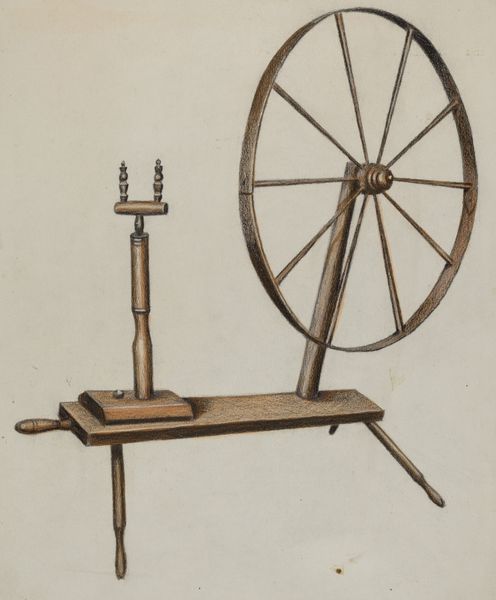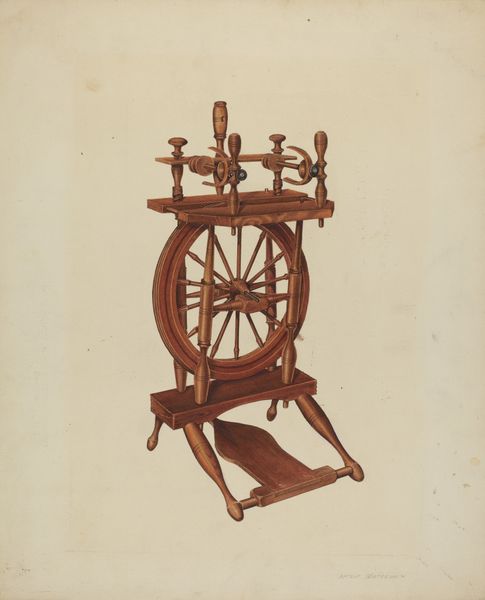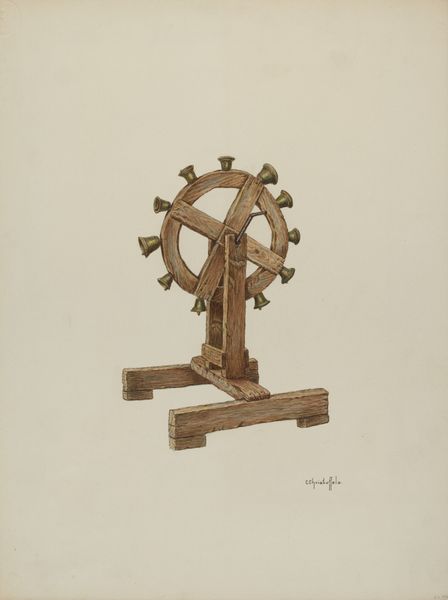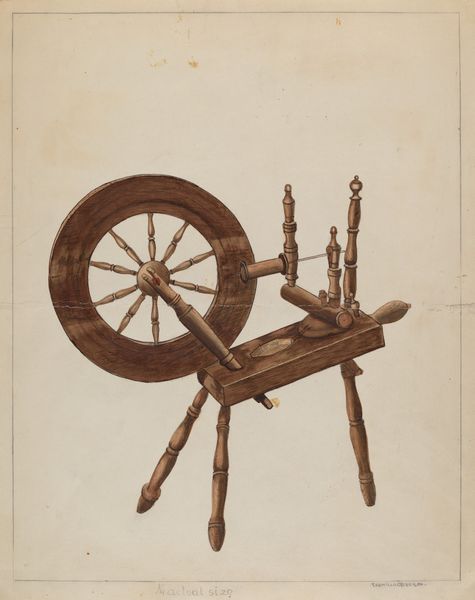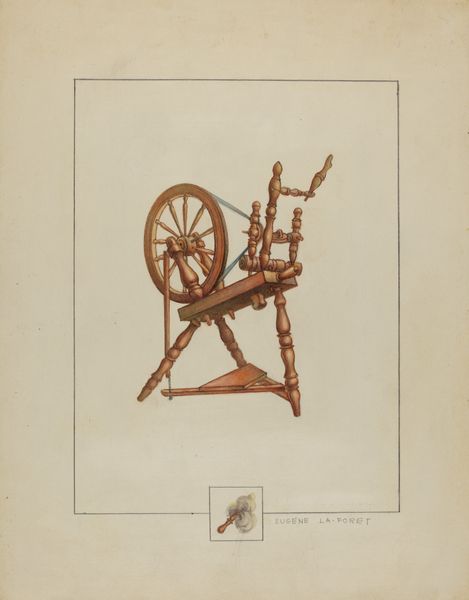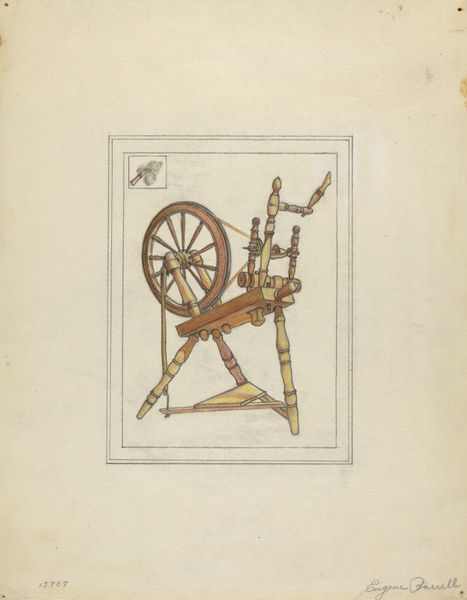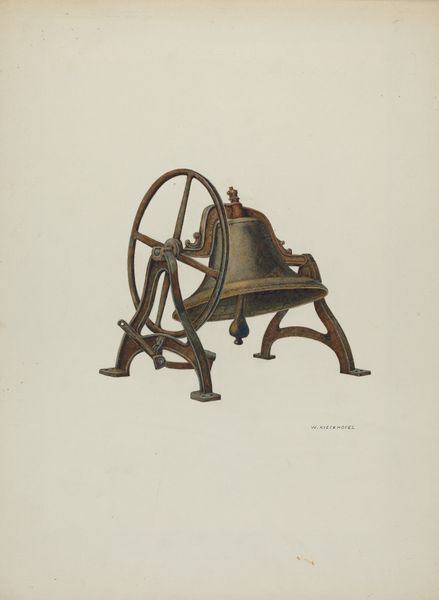
drawing, watercolor
#
drawing
#
watercolor
#
watercolour illustration
#
watercolor
Dimensions: overall: 45.5 x 30.1 cm (17 15/16 x 11 7/8 in.)
Copyright: National Gallery of Art: CC0 1.0
Editor: This watercolor and drawing by George V. Vezolles, around 1941, depicts a Shaker spinning wheel. The rendering feels quite precise and almost technical. How do you interpret this work, considering its historical context? Curator: The depiction of a spinning wheel here offers us a window into understanding labor, gender, and community. Consider the Shakers. Their utopian ideals included a radical vision of equality, with both women and men contributing vital skills. The spinning wheel, traditionally associated with women's work, therefore embodies themes of domesticity and industriousness within that shared society. Editor: That makes sense. The careful detail does suggest a deep appreciation for this object, perhaps even a reverence for the work it represents. Was this kind of labor particularly significant to Shaker identity? Curator: Absolutely. The Shakers valued simplicity, utility, and craftsmanship, believing that physical labor was a form of worship. But also consider the image date, around 1941. Might this be a nostalgic look at a pre-industrial past, one that's inherently critical of industrial labor that's becoming increasingly disconnected from materials and skills? What might the artist have intended to convey by choosing such a subject during this period? Editor: Wow, I never would have considered that it might also carry a message about labor in broader terms. Curator: Precisely. This artwork reveals layers of social meaning when viewed through the lens of both Shaker history and the era in which it was created. It calls us to examine not only the art, but our connection to these histories. Editor: I will definitely remember this when looking at other depictions of labor! Thanks!
Comments
No comments
Be the first to comment and join the conversation on the ultimate creative platform.
